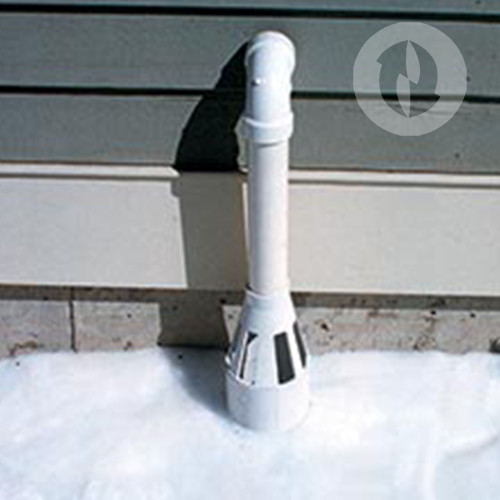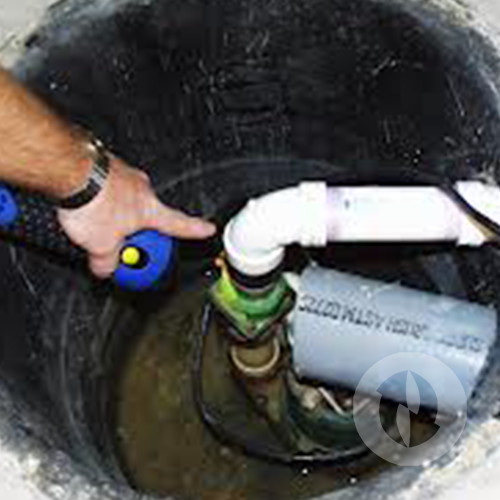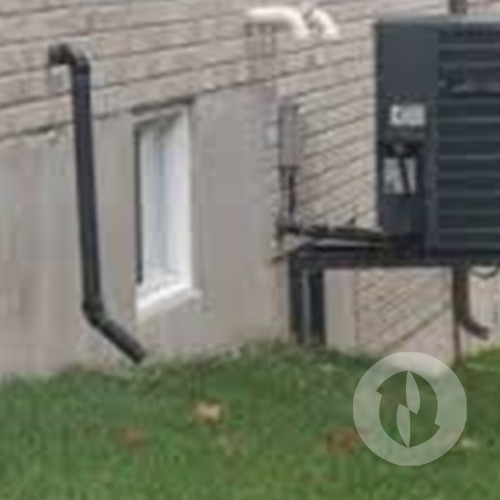So, you have a sump pump and you are wondering what would happen if yours failed?
There are a variety of reasons to consider a back up to your primary sump pump.
1. The power goes out
2. Your sump pump decided it was time to die
3. Your sump pump was not big enough to handle that 1 big storm
Before making the decision to spend money, we would highly recommend learning more about your sump pump. Take time to go down into the basement during heavy rain events and monitor your pump. How long is the period of time between cycles? If it is less than a minute, you have quite a bit of ground water entering your sump pit. If it is over 10 minutes, then you don’t have near as much. There is no clear dividing line on what is a lot of water, but you can use these numbers for a start.
Now take the time to see what would happen if your sump pump failed or quit working due to a power outage. UNPLUG THE PUMP TO SIMULATE A PUMP FAILURE. Watch the water levels in your sump pit to see how fast the water rises. This is what will actually happen during a pump failure or power outage. IF THE WATER IN THE PIT RISES TO 6” BELOW YOUR BASEMENT FLOOR LEVEL—PLUG YOUR PUMP BACK IN!!! You do not want to flood your basement.
Now you are more educated about your sump pump situation as it pertains to your home. Maybe you are not an expert, but you can make some basic assumptions and get a better feel for it. Additionally, you can take the information that you learned and let a professional know so they can help assess your situation.
It is now time for you to decide if you should spend some money on providing back up protection.
SOLUTION FOR: THE POWER GOES OUT
There are some possible solutions to provide back up assistance in the case of a power outage.
OPTION 1: BATTERY OPERATED BACK UP PUMP: These back up systems converts a 12 Volt battery into standard 120 Volt electricity to run the sump pump. Most of these systems utilize a separate sump pump that is capable of running on AC power. This pump typically sits directly next or on top of your primary sump pump. Some of them come with indicator lights that tells you the status of the system.
These battery operated back up pumps come in a variety of sizes and pumping capabilities. For most homes, you can expect to pay $ 400 – $ 1,200 which would include the AC pump, 12 Volt battery, piping, fittings, and labor. If you are handy, you can buy these at most hardware stores and install them yourself. Don’t forget all of the fittings and pipe glue that you will need.
Gordon Energy & Drainage offers the STORM-PRO 2100 and STORM-PRO AC33 which can pump up to 3,000 gallons of water per hour based on 10’ of head pressure. Head pressure is measured by how tall the unit has to pump water vertically before it discharges. We use 10’ as a standard to measure this. If your head pressure is less than 10’, you will get more pumping capacity. If your head pressure is over 10’, you will get less pumping capacity.
OPTION 2: WATER OPERATED BACK UP PUMP. This system is similar to the battery operated back up, but instead of using a battery to power the pump it uses your municipal water system.
The system, when installed, connects to your incoming water line. When the pump is activated, the water pressure from your incoming water line propels the pump into operation. Gordon Energy & Drainage offers the LIBERTY SUMP JET.
The positive: Very reliable! You should always have water pressure. You don’t have to rely on the battery or maintenance of a battery.
The negative: The pumping capacity is dictated by your water pressure. Most people don’t know what that is, and aren’t able to determine how well their back up pump will perform. Will it be enough? In most cases, a water operated back up unit will not be able to pump as much as a battery operate unit. Another thing to consider is the cost for water. Since your back up unit should only be working in the case of an emergency, you should not need to worry too much. But, if your water operated back up unit runs for a longer period of time, you will have to pay for that water.
OPTION 3: GET A GENERATOR: There are a wide variety of generators available on the market. The cost can vary greatly, but you can expect to pay $ 800 – $ 2,000 for one big enough to run a sump pump and a few other things. You can pay well over that for one big enough to run your entire house!
SOLUTION FOR: YOUR SUMP PUMP MAY DECIDE IT IS TIME TO DIE!
You can never know how long a sump pump will last. They are like coffee pots or hair dryers. They can last forever or a month. A good sump pump will come with a 1-2 year warranty. But, most warranties do not cover any losses that you may experience. They come with a replacement warranty only.
So, you have to ask yourself, “what is my risk?”
If you would feel better having a back up plan in place, then you could consider installing a battery back up sump pump (as discussed above) which runs on both battery or electricity. In this case, you have a back up in place that will protect you from a dying sump pump OR a power failure.
Another option is to install a 2nd standard pump that runs on electricity only. This will not protect you in the case of a power outage, but will be there in case your first pump dies. The odds of 2 pumps dying at the same time are much more unlikely. The advantage here is cost. A pump that runs on electricity costs less than a battery back up unit.
SOLUTION FOR: YOUR SUMP PUMP IS NOT BIG ENOUGH TO HANDLE THE STORM
When your primary pump is not big enough to handle the water that enters the sump pit, you have to consider beefing up your pumping power.
Option 1: Replace it with a bigger one that is sized appropriately. One negative with this is cost. The cost for pumps increase greatly the bigger they get. Another thing to consider is that you are throwing away your existing sump pump that was not big enough, but it still worked.
Option 2: Add another sump pump or battery back up unit into your existing sump pit. This allows you to keep your existing sump pump that is still working, but just not big enough to handle the heavy storms. In this case you would not need to add as big of a pump since you are still utilizing some of your pumps capabilities.
Before you spend any money, get the facts. Contact Gordon Energy & Drainage for your Kansas City sump pump installation needs.


 Sump pumps should generally be replaced every 5 years or so. Most homeowners ignore or seldom ever check the sump pump. It is important to have a professional look at and evaluate before problems happen.
Sump pumps should generally be replaced every 5 years or so. Most homeowners ignore or seldom ever check the sump pump. It is important to have a professional look at and evaluate before problems happen. If your home has a sump pump, you should learn about it. Sump Pumps are like any other electronic
If your home has a sump pump, you should learn about it. Sump Pumps are like any other electronic Go outside to where your sump pump is discharging. Is the water getting away from your home? How far should the water discharge away from the home? This depends on the slope of your yard. However, if you have good slope, we suggest at least 5′ away. If your grade is flatter or with slight slope, then at least 10′ away. However, the further away the better! You do not want the sump pump pumping the same water over and over again.
Go outside to where your sump pump is discharging. Is the water getting away from your home? How far should the water discharge away from the home? This depends on the slope of your yard. However, if you have good slope, we suggest at least 5′ away. If your grade is flatter or with slight slope, then at least 10′ away. However, the further away the better! You do not want the sump pump pumping the same water over and over again.